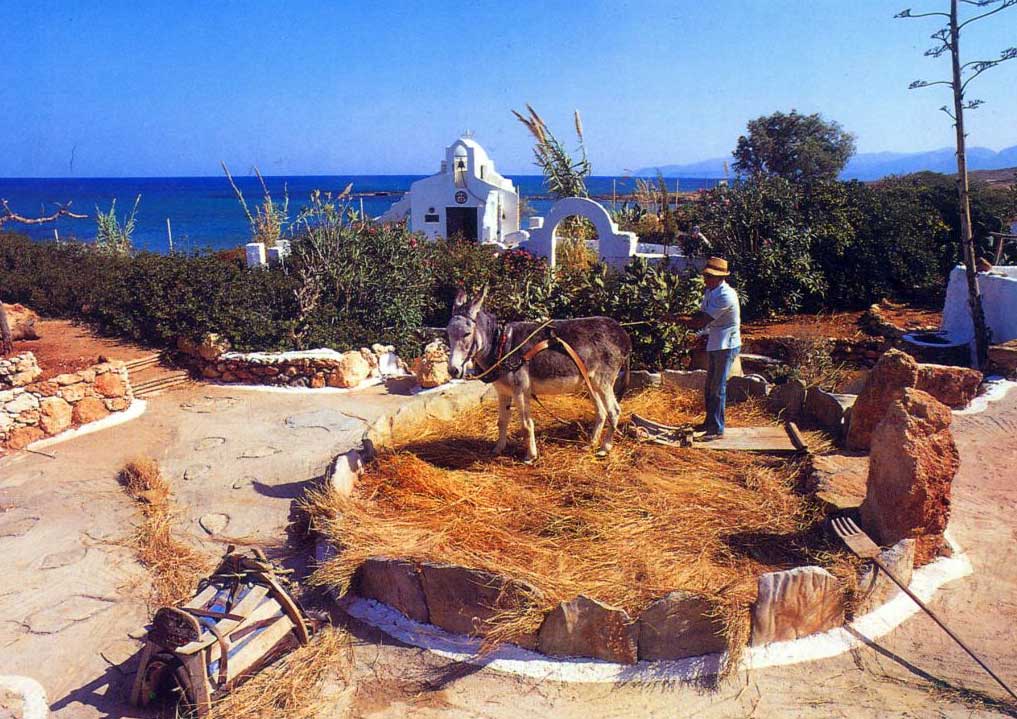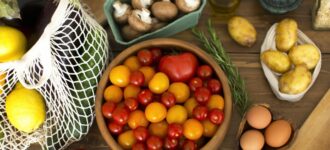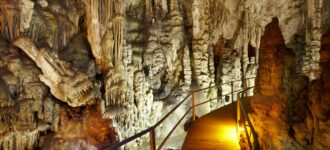
At the Lychnostatis Open Air Museum, Cretans celebrate their living heritage, traditions, and ethnology. Those visiting Crete for the first time and interested in folk culture and nature will find the museum’s structure and exhibits fascinating.
The Lychnostatis Open Air Museum is in Thesi Plaka, Hersonissos. When you stay at Alexander Beach Hotel & Village Resort, you can reach it in less than ten minutes by car.
Yiorgos Markakis, professor of ophthalmology, lecturer, and writer, spent years collecting and cataloguing most of the items on display.
The Markakis family and three local volunteer constructors planned and built the museum, its auditorium, and open-air theatre in seven years, using only raw and ecological materials from the area. As a result, all the buildings were handmade of stone, wood, and clay: the builders used no mechanical means or machinery like bulldozers and excavators.
You will see two traditional dwellings: a typical farmer’s house and a middle-class home. Authentic furnishings and decor enhance their interiors, invoking aspects of the Cretan past.
The chapel is a regular fixture in every Cretan village, so it shouldn’t surprise you to see it here. It is a whitewashed one-domed structure with a blue door, reflecting beautifully against the background of the sea as you descend towards it from the main buildings.
A traditional Cretan windmill invokes times long gone – very few windmills still survive on the island, most of which are in ruins. You will even see a shepherd’s shelter within the museum complex: Cretan shepherds still use this type of structure for shade or a refuge from bad weather.
Within the museum grounds are two entertainment areas: the auditorium, which seats 100 spectators, and the open-air theatre, which seats over 250. Both are in use: the museum hosts various events, ranging from theatre to live music performances and ethnic dances.
While you stroll from one facility to the other, you can observe Cretan herbs, citrus and olive trees, and other endemic plants. Of course, you are encouraged to touch and smell them, but the fragrance of the herbs is powerful enough to fill the air along your path.
Visit the herbarium for stronger scents and take your time in the garden and enjoy the shade of the fruit-bearing trees. The cactus garden is a beautiful sight, too.
Visitors will enjoy participating in different traditional craft workshops, like learning the Cretan ceramic and pottery art, weaving, shoemaking, and a bees’ wax workshop.
Visit the wine press and olive-oil press sections to see how the Cretans of yesteryear made these cherished beverages. In some villages, they still use these methods today.
And did you know that raki (tsikoudia) is the “national” beverage of the island? You will learn everything there is to know about raki-making and rakokazano (raki distillery) at the Lychnostatis Open Air Museum.
You will also enjoy the Cretan folk artists’ gallery and the minerals exhibition. In addition, the museum’s library contains an extensive collection of books and periodicals pertaining to Cretan folk culture. Speaking of which, check out the books by Yiannis Markakis available at the museum gift shop, where you can find Cretan homemade products and souvenirs.
The museum has been a Cretan must-see attraction since it opened its doors in 1992. It attracts thousands of visitors yearly, but you will enjoy a pleasant, stress-free visit despite its popularity. Your second visit will be free of charge.
Consider not leaving without a souvenir, and stop by their cafe for tea, coffee, refreshments, and Cretan sweets.





